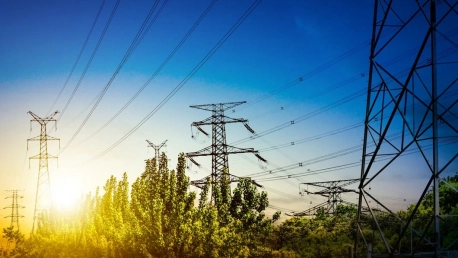OPEC Secretary General Haitham al-Ghais recently expressed significant skepticism about the world’s approach to achieving a sustainable, green future in an essay for the Energy Intelligence Group. Al-Ghais is critical of the overly optimistic methods anchoring the objective of reaching net-zero carbon emissions by 2050. Representing the common perspective within OPEC, he suggests that current global energy strategies, while ambitious in environmental goals, gravely overlook the complexity involved in a genuine transition to sustainable energy sources. He implies that these strategies are not sufficiently accounting for the nuanced and intricate aspects that are essential to successfully balance the world’s energy demands with environmental preservation. This viewpoint underscores the tension between climate ambitions and the practicalities of energy policy implementation.
Misalignment with Reality
Al-Ghais highlights what he perceives to be a glaring rift between the ideological goals of the energy transition and the hard truths of energy consumption and production. Despite billions poured into renewable sources like wind and solar, these technologies make up a minute portion of the energy mix. Hydrocarbons – oil, natural gas, and coal – remain the dominant source, contributing to more than 80% of global energy use, a figure which has stood its ground for three decades. Such trends underscore Al-Ghais’s assertion that energy transitions are historically additive – complementing rather than replacing existing sources, and spearheaded by emerging technologies rather than prescriptive policies.The Secretary General takes aim at the economic aspects of the transition, pointing out the considerable subsidies needed for electric vehicles (EVs) and the financial obstacles faced by renewable technologies. Wind and solar power, while clean, are subject to inconsistencies like intermittency, which demands expensive solutions to integrate seamlessly into energy grids. Compared to the consistent and economically scalable energy provided by hydrocarbons, renewables still struggle to compete on cost, notwithstanding their potential environmental benefits.
The Plight of the Developing World
Al-Ghais underscores the unfair burden that energy transition strategies place on developing nations. These countries consume far less oil per person and their primary aim is to acquire energy to drive development and improve the quality of life. Costs for renewable energy and electric vehicles are exorbitant, making them inaccessible for many in poorer nations. This creates a difficult situation where their right to develop is at odds with the need to address climate change.Al-Ghais points out that emerging technologies in the oil sector, such as carbon capture and hydrogen fuel, could be key in balancing current energy needs with reducing emissions. By integrating such technologies, the oil industry could actively participate in lowering carbon footprints while continuing to meet the energy demands of the developing world. This approach suggests a more feasible pathway to a greener future that considers the immediate needs and constraints of developing economies.
Toward a Balanced Energy Future
In his article’s closing remarks, Al-Ghais invites a global reassessment of the energy transition approach. He pleads for a revised narrative that better acknowledges and accommodates the needs of the entire spectrum of the global population. The suggestion is for policies that aim to bridge the gap between lofty environmental goals and the more grounded energy requirements of daily life. It is a call to ensure that in our quest to tackle the climate crisis, we do not hinder the basic human pursuit of comfort and development by placing a disproportionate strain on economies least equipped to manage such a transition.This blend of reality and aspiration, in Al-Ghais’s view, is the cornerstone to achieving the dual objectives of securing energy availability for all and mitigating the impacts of climate change. A recalibrated energy policy, one which fosters diversity in energy sourcing and acknowledges the role of various technologies, is fundamental to a truly inclusive and effective global energy transition.









